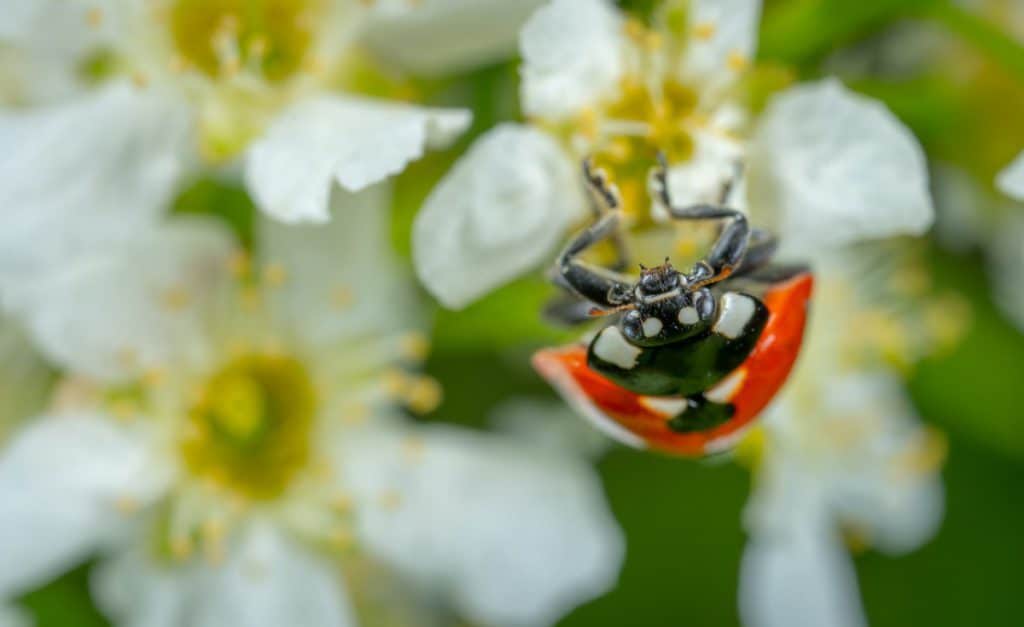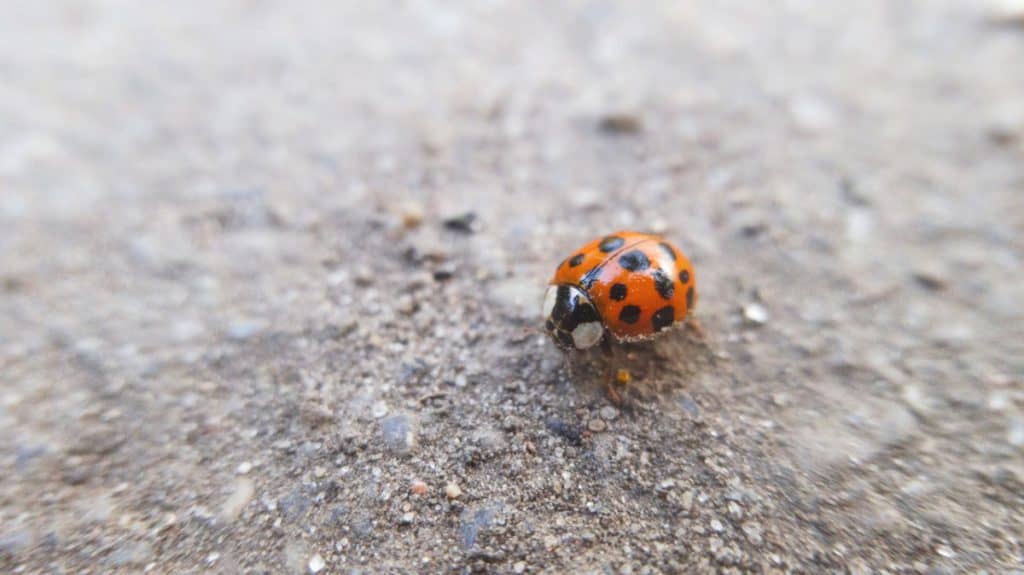
Are ladybugs boy or girl?
It might be a bit of a surprise for you, but ladybugs are not actually bugs. Yep, you read it right; they are not bugs. Apparently, ladybugs are considered to be beetles. Contrary to what many believe, not all ladybugs are female. There are male ladybugs, as well.
If you enjoy reading this article, why not check out our articles on What Can Ladybugs Damage? The surprising answer and What Do Ladybugs Eat? Lets Find Out
What are boy/male ladybugs called?
Male ladybugs are called ladybugs too. The name encompasses both the male and female species of ladybugs. Unless you are a specialist and you look at the ladybugs under a microscope, it’ll be very difficult to determine the gender of a ladybug.
There are more fun and interesting facts about this critter, and we will look at a few of them in this article.
Named After Mother Mary
One of the reasons why ladybugs have been mistakenly thought to be all-female is the fact that it is named after a female. This female we are talking about is none other than the Virgin Mary herself. The reason behind it is that a certain species of ladybugs in Europe is called the seven-spot ladybug. The seven spots of this critter are said to remind people of the seven sorrows of the Virgin Mother Mary. In Germany, they call ladybugs as Marienkäfers, which can be translated to Mary’s beetle or Marybeetle in English.
They Have Other Fun Names
One of the fun facts about ladybugs, other than them being a beetle and not a bug, is the other names they are known for. There are parts in England where they refer to these vibrantly colored insects as “bishop” or “Bishop Barnabee”. It is a nickname given by the Norfolks for the ladybug. Another fun name that this insect has is “ladybird”. It is given this nickname because they are good fliers. In Russia, it is popularly known as bozhya korovka, translated to English as “God’s little cow”. The French call them vache a Dieu, translated to “cow of God” in English.
Their Vibrant Color Is Actually A Warning
The vibrant color of ladybugs has been why many like them. However, this attractive red with black spots color they have serves as a warning. Most animals in the wild have some form of defense mechanism, and ladybugs are no different. The more vibrant the color they have, the more dangerous they are. You can say that their bright colors serve as a “stop” or “beware” sign for others who are thinking of eating them. Which brings me to my next fun fact! If you want to read a whole article about the color of ladybugs, check out The Color of Ladybugs – Explained!
They Produce A Toxic Chemical

Like I mentioned in the previous section, insects have a defense mechanism. The ladybug’s primary defense is their vibrant color, which serves as a warning, but there is another one that much more effective. They produce a toxic chemical that is foul-smelling and makes them taste yucky to birds and other predators lurking around. Again, the brighter the color of the ladybug, the stronger the toxins are. Don’t go crazy yet; the toxins of a ladybug is not lethal to humans unless you eat tons of them or is already naturally allergic to the chemicals in the toxin. Although these chemicals aren’t harmful to humans, they can damage other things. Find out more about that by reading What Can Ladybugs Damage? The surprising answer.
Funny Looking Babies
Everyone loves a ladybug. They’re round, cute, and so bright. I can’t say the same about their babies. One of the descriptions of a ladybug larva that I read said that it looked like a teeny tiny alligator because of its spiny exoskeleton. Not cute at all. But wait, I’m not done yet. As the larvae feed and grow, they turn into even weirder and alien-looking pupae. This is where the magic of transformation happens. Once the pupae reach adulthood, it will burst out of its old skin, looking just like the darling, cute, and bright ladybug we know of.
Some Of Their Eggs Serves As A Snack For Their Young
Ladybugs lay about 10 to 50 eggs in a cluster on a leaf where there is enough food for their offspring. A single female ladybug can lay about 1,000 eggs from spring to early summer. On each cluster, there are a few eggs that are not destined to hatch but rather serve as a snack for their babies (I know, it’s weird). Eggs that are not intended to hatched are laid without embryos in them, so they are not really eating their siblings; instead, the moms just prepared an advanced snack gift for them.
They Are Considered As Predators
Ladybugs are not just loved by many because they are cute and colorful. They are also a gardener’s best friend. They are a natural predator of plant pests and is said to be able to devour 5,000 aphids in a lifetime. Among the pests that are part of their diet are the scale bugs, mealybugs, and of course, their favorite aphids. However, some species include pollen and some vegetation as part of their diet. It is not their main diet, but they do supplement it with plant food. For example, a species of ladybugs that originated in Mexico called the Mexican bean beetle is a ladybug that eats beans. While some dine on crops like squash, cantaloupe, and pumpkin, some prefer to eat mildew.
Ladybug Flavored Wine
Don’t be fooled by that title. One species of ladybug has been causing problems to winemakers because they inadvertently flavor the wine with their toxic chemicals. The dose is not lethal and would not harm humans, but the flavor of the wine changes because of the chemicals. Are these chemicals considered poisonous? Find out in our article Are Ladybugs Poisonous?
The species is known as the harlequin ladybugs, and winemakers dubbed their dilemma as the “ladybug taint”. What happens is that most vineyards are situated near crop fields where aphids are plenty, and the ladybugs dine on them. But what happens when the crops are harvested, and there are no more aphids for the ladybugs? The ladybugs look for a new place to chill, and nearby vineyards are their next destination.
When the grapes are ripe for harvest, the ladybugs are accidentally spooked during harvesting and sprays the grapes with their toxin, therefore, flavoring the fruit with it. The end product is a weirdly flavored wine that is likened to stinky asparagus or peanuts.
Conclusion
As you can see, boy ladybugs or male ladybugs are also called ladybugs. It is a common misconception that all ladybugs are female. Aside from that trivia, this article includes more fun and weird facts about this creature. From the origin of their name to the defense mechanism they have and some odd but interesting facts about their babies. But I can assure you that there is only one thing for sure, I would not want to try a ladybug tainted wine. Kidding aside, ladybugs are considered to be harmless creatures. In fact, they are more known as a gardener’s best friend. The fun and interesting facts I’ve mentioned above are just a few that caught my interest, but there is plenty more to be known about them. Let’s not forget that ladybugs are a part of an ecosystem, so don’t just go squishing one when it lands on you.
If you enjoyed reading this article, why not check out our articles on Everything you need to know about Bugs and Your Garden and Are Ladybugs Poisonous?
Recent Posts
Tiny Black Bugs in Bathroom NO WINGS: What They Are and What to Do!
Finding tiny black bugs in your bathroom can be uncomfortable, to say the least. Especially if they are persistent, or they appear in very large numbers, which they often like to do. When it...
Tiny Black Bugs in Plant Soil - What Are They & What To Do About It
A short horror story: You get a new houseplant. You do your best to take care of it. You’ve ensured that it has the right soil, the right amount of sun, it gets enough water. And then one day, you...

